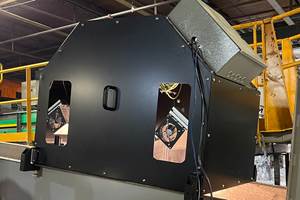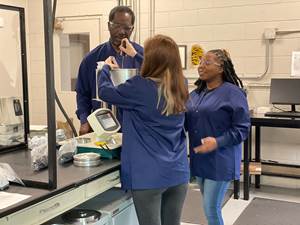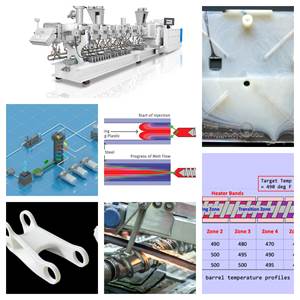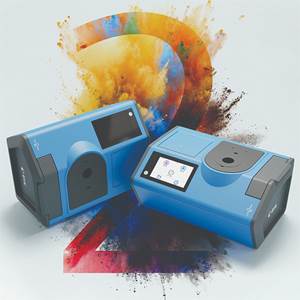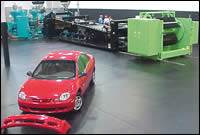How to Thermoform Top-Quality IMD Inserts
Wider adoption of in-mold decorating (IMD) for demanding industries like automotive, appliances, and consumer electronics will require thermoformers to have the right know-how and equipment.
Wider adoption of in-mold decorating (IMD) for demanding industries like automotive, appliances, and consumer electronics will require thermoformers to have the right know-how and equipment. Making precisely formed film inserts is critical for applications with registered print or graphics or an automotive Class A surface.
“The preform shapes and defines the decorative part surface,” comments Jeff Christensen, specialist at the In-Mold Applications Div. of Display Pack, a leading designer and former of IMD preforms. Inserts must fit snugly in the mold cavity and resist tendencies to degrade, wrinkle, thin out, or change color under the influence of heat and pressure during back-molding. Christensen says making IMD preforms requires expertise in films, inks, and thermoforming. Suitable equipment needs state-of-art temperature controls to precisely govern sheet-temperature profile, sheet sag, material distribution, and registration accuracy.
Patrick Griffin, applications specialist at Bayer Polymers, says male tools are preferable for making Class A preforms since they attract less dust that can become embedded in parts. Male tooling also minimizes film wrinkling in complex tool areas, Griffin says. He adds that an intimate interface between film and tool surface is necessary to get efficient heat transfer, so precise die-cutting of IMD inserts to fit the cavity is critical. He favors use of 3D matched-metal dies for this task.
Griffin also advises that films for inserts should have low stress levels and should be brought up to forming temperature in a controlled way for efficient evaporation of residual moisture and ink solvents. Uncontrolled emissions can impair gloss and create flaws in part surfaces, he notes.
Conventional vacuum forming equipment offers maximum registration accuracy of about ±0.020 in., Griffin says. When tighter tolerances are required—e.g., for telecom devices, where the standard is ±0.005 in.—he recommends use of a specialized process that forms inserts with low-temperature, high-pressure air.
Dedicated IMD machine
Jacob Horev, v.p. of equipment supplier ZMD International, notes that registration accuracy is critical if logos, words, or symbols on the film insert are to end up at exactly the right spot on a repeatable basis. ZMD is offering a single-station vacuum former designed specifically for registered IMD inserts, which typically are made out of polycarbonate films.
ZMD’s model V-222DHCG and V-223DHCG machines have forming areas of 24 x 24 and 24 x 36 in., respectively, and use 58 to 87 independently controlled heat zones on both top and bottom. Horev reports strong sales of these machines for IMD of cellular phone housings, cameras, appliance controls, membrane switches, and woodgrain interior automotive panels.
One prerequisite for registered IMD inserts is excellent control of oven and sheet temperatures. The ZMD top heater platen can be adjusted up and down to increase sheet-temperature accuracy, while the bottom heaters provide a fast temperature rise to support the sheet and achieve near-zero sagging, Horev says. Oven temperature is controlled to ±1° F.
In conventional forming equipment, the heating cycle is governed by time, percent power, or sheet sag. ZMD monitors actual sheet temperature with noncontact infrared pyrometers that can “read” the temperature and then automatically initiate the forming cycle when the sheet reaches the target temperature.
Precise temperature control of molds is critical to controlling shrinkage of inserts. Every 5° F variation in mold temperature can cause a 0.001 in./in. change in shrinkage.
ZMD’s machines also minimize distortion of printed graphics by keeping the clamp frame stationary during the heating cycle while moving the heater platens, thus all but eliminating sag. Horev says excessive sag is a major cause of image distortion. In addition, a four-way adjustable pneumatic clamp frame reportedly allows easy setting of sheet position for registration within ±0.005 in.
Related Content
Metaspectral to Advance Vision Technology for Recycling
Company received further funding from British Columbia’s CleanBC Plastics Action Fund
Read MoreSD Polymers: 'One-Stop Solution for Mechanical Recycling'
‘Passionate’ recycler invests in people and technology to meet commitment to innovative, sustainable solutions for its processor customers.
Read MorePlastics Technology’s Most-Viewed Articles from 2022
Tips, new technologies, resin pricing, best practices and more piqued reader interest at Plastics Technology in 2022.
Read MoreBenchtop Spectrophotometer Combines Several, Different Measurement Methods
BYK-Gardner’s new color2view said to open new horizons in color measurement.
Read MoreRead Next
Where the Action Is: Decorating with Formable Films
Plastics processors are eyeing form able films as an economical, durable, and environmentally friendly means of producing fully decorated parts right out of the mold.
Read MoreAdvanced Recycling: Beyond Pyrolysis
Consumer-product brand owners increasingly see advanced chemical recycling as a necessary complement to mechanical recycling if they are to meet ambitious goals for a circular economy in the next decade. Dozens of technology providers are developing new technologies to overcome the limitations of existing pyrolysis methods and to commercialize various alternative approaches to chemical recycling of plastics.
Read MoreWhy (and What) You Need to Dry
Other than polyolefins, almost every other polymer exhibits some level of polarity and therefore can absorb a certain amount of moisture from the atmosphere. Here’s a look at some of these materials, and what needs to be done to dry them.
Read More
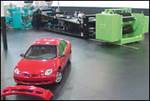



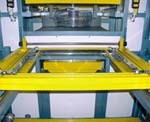













.png;maxWidth=300;quality=90)

